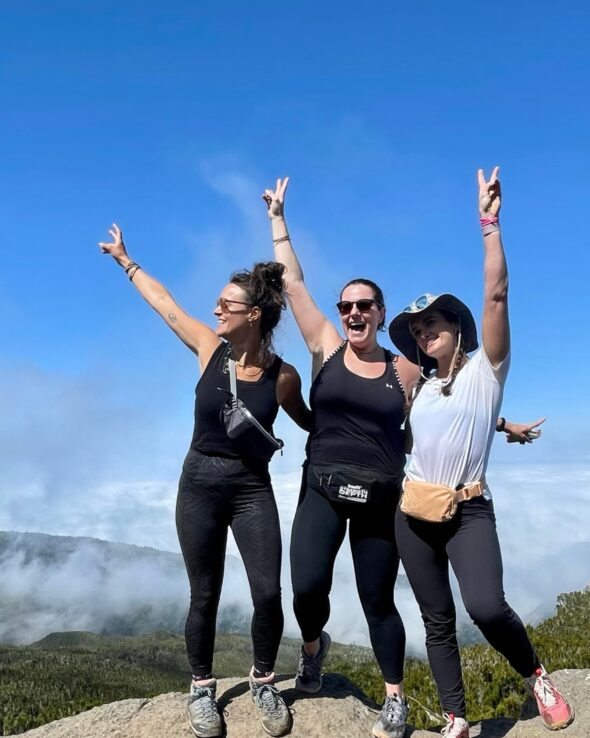Snow, water, dirt, and pebbles have a knack for sneaking into even the most waterproof boots. Gaiters provide the extra layer of protection needed to keep your feet dry and comfortable by covering the vulnerable tops of your footwear. Here’s a guide to help you choose the right gaiters for your activities, understand the different types, and use them effectively.
Types of Gaiters
All gaiters aim to keep debris and moisture out of your boots, but the best type for you depends on your planned activities and the conditions you’ll encounter.
Hiking
- Lightweight and breathable for basic protection against rocks, grit, and light rain.
- Some are fully waterproof for rainy or snowy conditions.
- Suitable for anything from short hikes to multi-day backpacking trips.
Mountaineering
- Heavy-duty protection and added insulation for harsh conditions.
- Waterproof and breathable materials to shield against rain and snow.
- Ideal for mountaineering, ice climbing, backcountry skiing, cross-country skiing, and snowshoeing.
Trail Running
- Very lightweight and compact to keep debris out of shoes.
- Typically not waterproof.
- Popular among ultralight hikers and thru-hikers who prefer trail-running shoes.
There’s flexibility in these categories—mountaineering gaiters can also work for hiking if conditions warrant it. The key is to match the level of protection to your needs.
Gaiter Height
The height of your gaiters depends on how much coverage you need. Taller gaiters offer more protection but can be hotter and restrict airflow more than shorter ones.
Over-the-Ankle
- Designed for trail running and summer hiking.
- Keeps pebbles and debris out of shoes.
Mid-Calf
- Typically 8-12 inches tall.
- Good for moderate conditions to keep debris and light rain out.
Knee
- Around 15-18 inches tall.
- Best for deep snow, wet brush, and harsh weather.
Gaiter Sizing
Proper fit is crucial to prevent water, snow, and debris from entering your boots and to ensure comfort. Most gaiters are sized based on shoe sizes, such as:
| Gaiter Size | U.S. Men’s Shoe Size | U.S. Women’s Shoe Size |
|---|---|---|
| Small | 5 – 7 | 6.5 – 8.5 |
| Medium | 6 – 9 | 7.5 – 10.5 |
| Large | 8 – 11 | 9.5 – 10.5 |
| Extra Large | 10 – 13 | – |
When trying on gaiters, wear the boots or shoes you plan to use them with. Ensure the gaiters fit snugly around your boots and legs, with no obvious gaps.
Tips for Hiking/Mountaineering Gaiters
- Check the fit around your boots and legs. The fit should be snug to prevent moisture from getting in.
- For larger calves, adjust the hook-and-loop fastener to achieve a half-inch overlap for comfort.
- Size up for larger boots like mountaineering or snowboard boots.
Tips for Running Gaiters
- Ensure they attach securely to your shoes. Some use hook-and-loop patches, others have instep straps.
- The fit around your ankles and lower shins should be snug but not uncomfortable.
Gaiter Features
Waterproof
- Essential for mountaineering and snow sports to keep moisture out.
Insect Repellent
- Some gaiters are treated to repel mosquitoes and ticks, useful for buggy areas.
Abrasion-Resistant Fabric
- Durable nylon on the lower portion to withstand ice, rocks, and crampon nicks.
Soft-Shell Fabric
- Offers flexibility and excellent weather protection.
Coated Nylon
- Lightweight and suitable for short hikes or fast-packing through rough terrain.
Entry System
- Typically secured by hook-and-loop fasteners down the front for easy access.
Top Closures
- Cinched with toggles and elasticized drawcords, or straps with cam buckles for a secure fit.
Instep Straps
- Secure the lower edge around your boots. Premium gaiters feature durable straps.
Lace Hooks
- Attach to boot laces for added security.
How to Put Gaiters On
- Position Properly: Hook-and-loop closures should be in front, with the fabric wrapping behind your legs.
- Buckle Placement: Instep strap buckles should be on the outside to avoid accidental kicking.
- Adjust Straps: Adjust instep straps to fit snugly around your boots.
- Engage Lace Hooks: Hook laces as far down as possible for secure attachment.
- Close Fasteners: Secure hook-and-loop fasteners snugly but comfortably.
- Top Closures: Snug the top closures to keep gaiters from slipping, but avoid overtightening.
- Secure Additional Closures: Fasten any extra snaps or closures.
Tip: In heavy rain, wear gaiters under your rain pants to prevent water from running into your boots.
Choosing the right gaiters and using them correctly will keep your feet dry and comfortable, no matter where your adventures take you.









